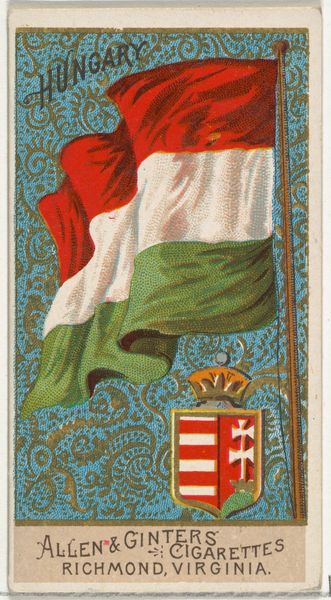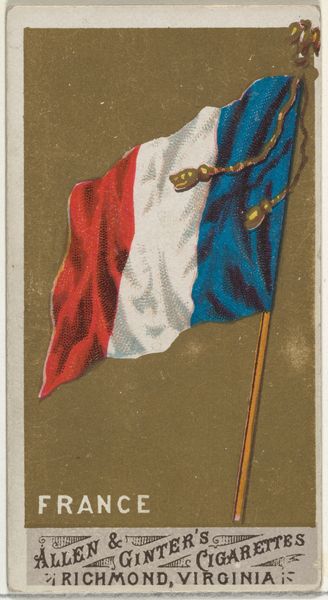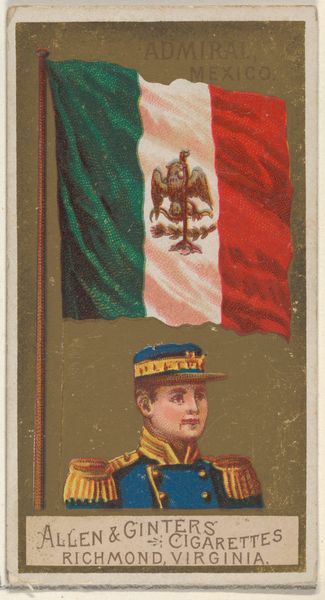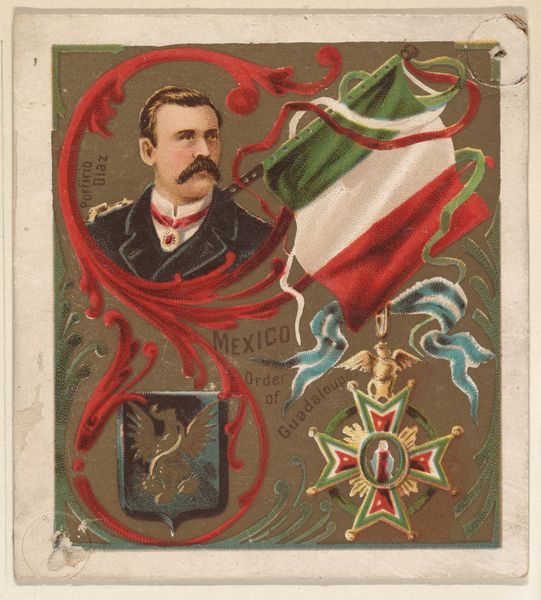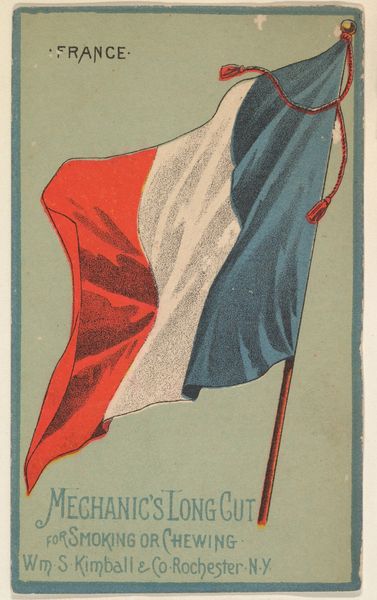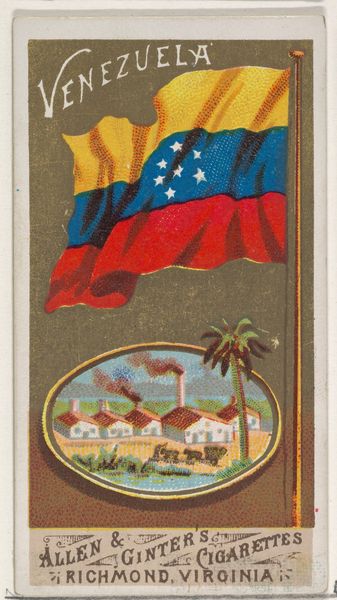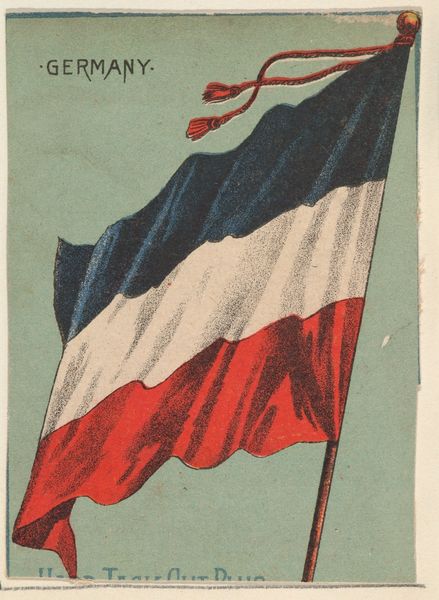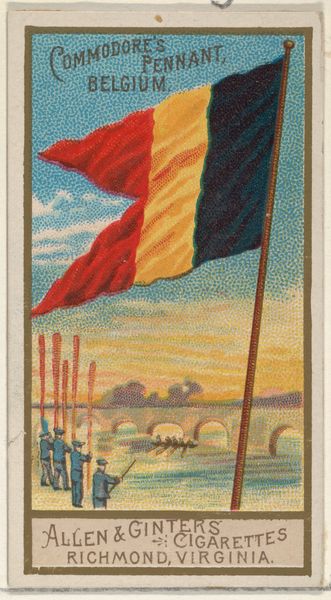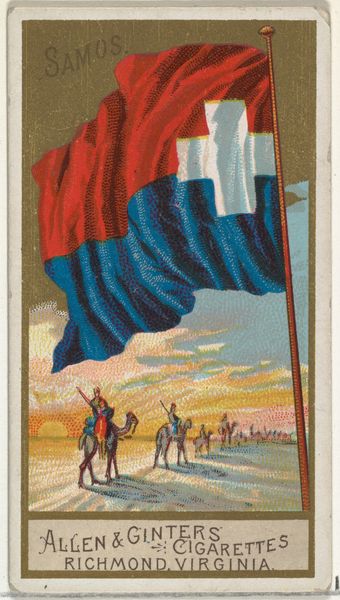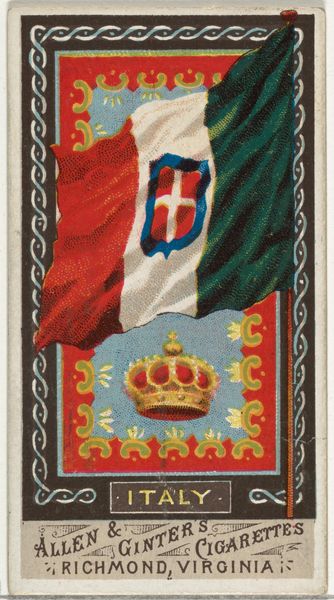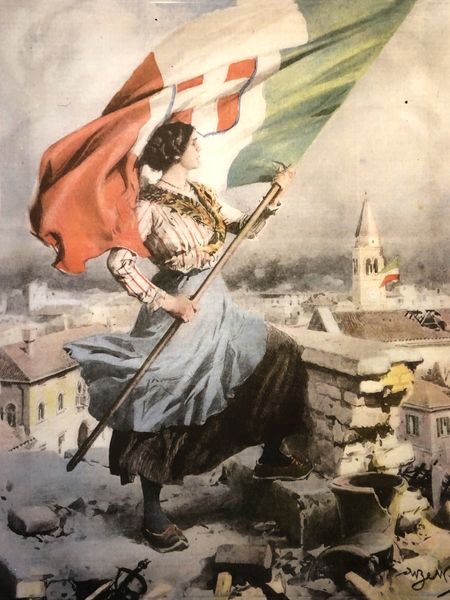
Mexico, from the National Flags series (N195) issued by Wm. S. Kimball & Co. 1891
0:00
0:00
drawing, graphic-art, coloured-pencil, print, poster
#
drawing
#
graphic-art
#
coloured-pencil
# print
#
caricature
#
coloured pencil
#
poster
Dimensions: Sheet (trimmed): 3 1/2 × 2 3/8 in. (8.9 × 6 cm)
Copyright: Public Domain
Curator: Here we have "Mexico, from the National Flags series (N195)", published by Wm. S. Kimball & Co. around 1891. It’s a chromolithograph trade card, featuring the Mexican flag rendered in vibrant coloured pencils. Editor: Well, the composition is strikingly bold. The flag dominates the space, its waves are almost frozen. The primary colors pop against that cool background. Curator: Indeed. The flag itself isn't merely a national symbol here; it’s laden with layers of historical narrative. Notice the eagle perched on the cactus, devouring a serpent. It directly references the Aztec founding myth of Tenochtitlan, now Mexico City. The place where they saw the eagle eating the snake was believed to be their promised land. Editor: The semiotic density is compelling. The artist simplified and amplified certain details, really. Those colors are a clear marker for national identity, though subtly desaturated by the printing method itself. Curator: Absolutely. Beyond its immediate symbolism, it functioned as promotional material—these cards were distributed with tobacco products. It speaks to a late 19th-century fascination with nationalism, exoticism, and commerce intersecting in popular culture. It would be distributed as commercial ephemera while subtly imprinting patriotic ideas onto the collective psyche. Editor: So, it's mass-produced, a commercial object that contains encoded historical and national information. Interesting. It is the mechanical reproduction of a historically informed aesthetic, making it widely available but stripping the cultural narrative from its original purpose. Curator: Exactly. It's a tangible relic that links tobacco advertising with powerful patriotic messaging. Seeing it now reminds us of the complicated relationship between commodity culture, identity formation, and historical memory. Editor: It reminds me of the interplay between mass production, and high concept that can still linger from such an item. Food for thought indeed!
Comments
No comments
Be the first to comment and join the conversation on the ultimate creative platform.

